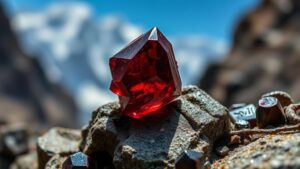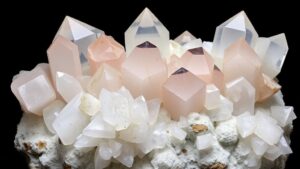Turquoise Finds: The Legacy of Ancient Miners in Modern Discoveries
Turquoise Finds: The Legacy of Ancient Miners in Modern Discoveries
Turquoise is a captivating gemstone that has long held a special place in cultures around the world, from the ancient Egyptian pharaohs to the Native American tribes of the American Southwest. As both a mineral and a cultural symbol, turquoise encompasses a rich history that intertwines with the development of mining techniques through the ages. This article explores the legacy left by ancient miners, the significance of their findings, and the continuing allure of turquoise for modern rockhounds and mineral collectors.
The Historical Significance of Turquoise
Turquoise has been prized for thousands of years due to its vibrant hues of blue, green, and sometimes even yellow. e colors come from the presence of copper and iron within its chemical structure, which is typically represented as CuAl6(PO4)4(OH)8·4H2O. Archaeological evidence indicates that turquoise mined as far back as 6000 BCE in regions such as Persia, the Americas, and Asia. For example, the ancient Egyptians would use turquoise as decorative pieces, burial ornaments, and even in jewelry, believing it offered protection and good fortune.
In North America, Native American cultures revered turquoise, using it in ceremonial artifacts and as an important trade item. Southwestern tribes, including the Navajo and Zuni, are renowned for their beautiful inlay work that features turquoise, often combined with silver, creating stunning pieces of art that are still highly sought after today.
Mining Techniques Through the Ages
The methods used to extract turquoise have evolved significantly, reflecting advancements in technology and understanding of geology. Ancient miners utilized rudimentary tools to excavate turquoise from the earth, often using stone hammers and chisels to quarry the mineral from hillside deposits.
In contrast, modern miners leverage advanced geological mapping techniques and machinery to locate and extract turquoise. For example, companies now employ heavyweight drills and automated tools to extract material efficiently while minimizing environmental impact.
Discoveries: Historical and Modern
Several famous turquoise mines, notably the Sleeping Beauty Mine in Arizona and the Kingman Mine, have produced some of the highest-quality turquoise known to collectors. Sleeping Beauty Mine, characterized by its pure sky-blue hue without matrix (the stone that forms around the turquoise), has been a treasure trove for rockhounds since the 1970s.
Also, regions like Iran, known for the Nishapur deposits, further highlight the ancient legacy. The traditional mine, which has been active for over three millennia, continues to yield turquoise sought after for its deep coloration and quality.
Modern Collecting: What Rockhounds Need to Know
For rockhounds and mineral collectors, understanding the provenance and quality of turquoise is critical. Here are a few practical tips to consider when looking to expand your collection:
- Learn to Identify Authentic Turquoise: Genuine turquoise will feel cool to the touch and has a waxy luster. Always inspect the stone for matrix patterns and variations in color.
- Research Different Mines: Familiarize yourself with various turquoise mines; knowing the source can help determine its value and authenticity.
- Attend Rock Shows: Local rock and mineral shows often feature vendors selling turquoise. This is an excellent opportunity to network and learn from other collectors.
The Future of Turquoise Collecting
Turquoise collecting is not just about the stones themselves; it embodies a connection to the rich history of the earth and its peoples. It’s essential for collectors to remain aware of ethical sourcing practices. With increasing awareness around sustainability, many collectors now seek turquoise sourced from ethically managed mines, ensuring that purchasing this beloved gemstone also supports responsible practices.
Actionable Takeaways
To wrap up, turquoise mining has a profound legacy rooted in history and culture, with ancient techniques and modern practices coalescing in today’s artisanal world. Rockhounds should consider the following takeaways:
- Investigate the history and sources of turquoise to make informed purchases.
- Always verify authenticity through reputable dealers.
- Engage with local and online mineral collecting communities for knowledge exchange.
By embracing the legacy of ancient miners and the achievements of modern geology, collectors can truly appreciate the beauty and significance of turquoise in both their collections and the wider world.



